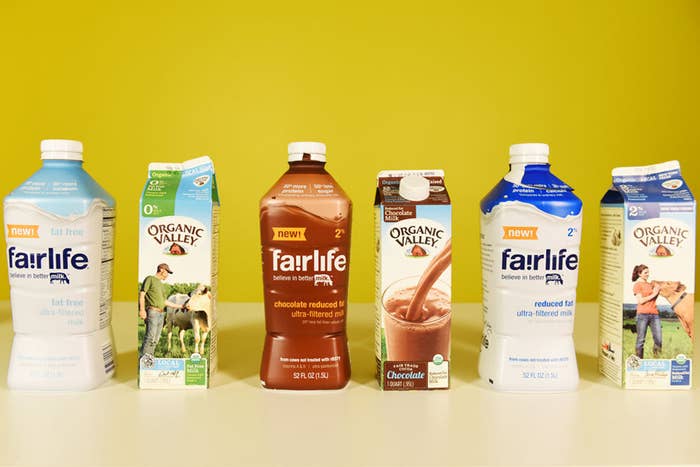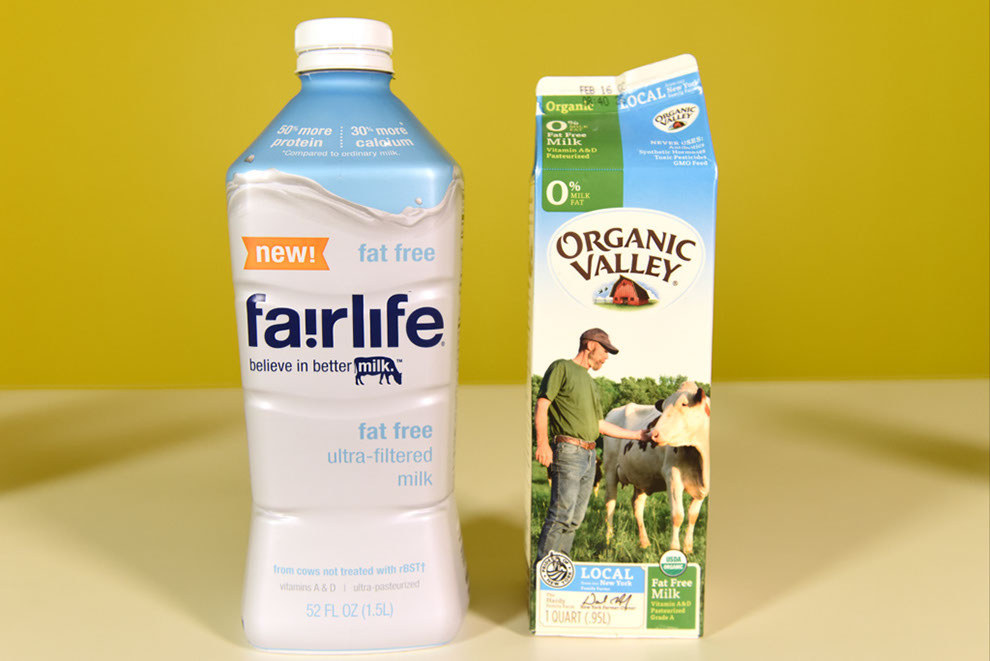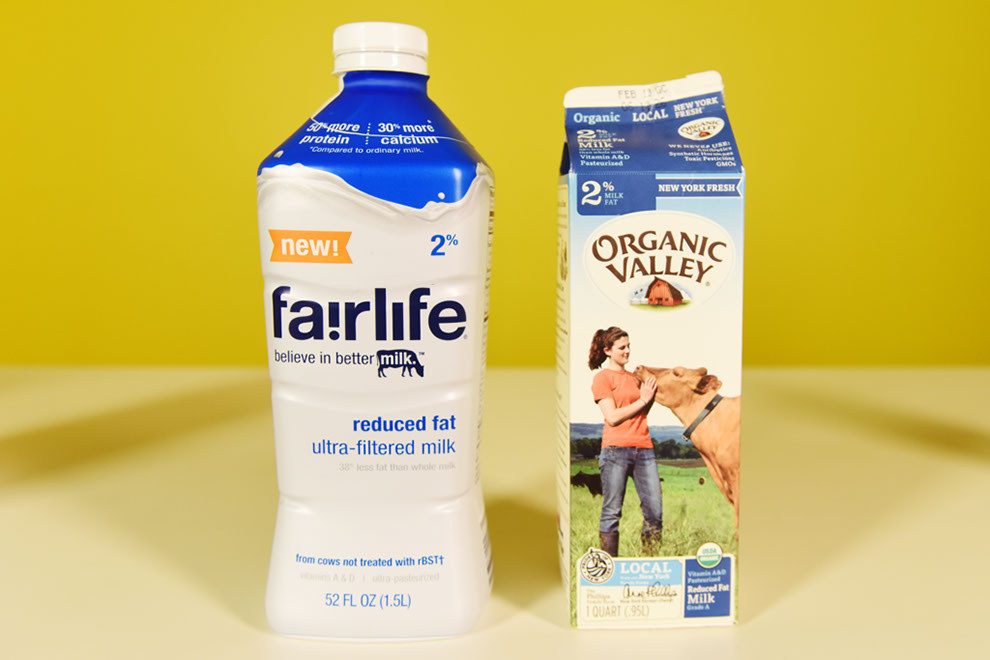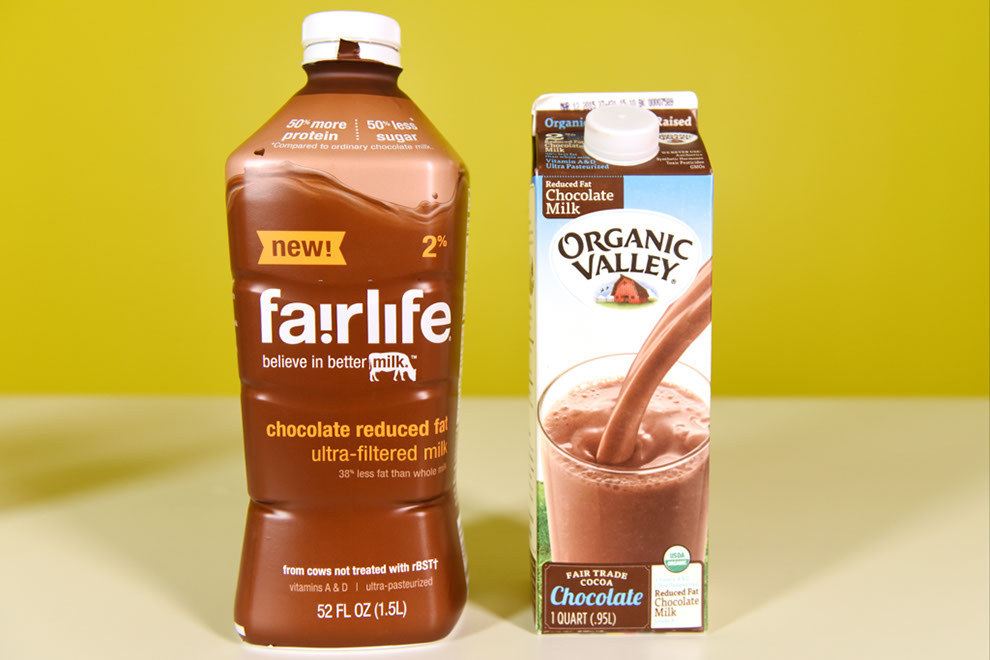
Last week, Coca-Cola launched its new "premium" line of milks, called Fairlife. The products are being marketed primarily on nutritional value and sustainability. To make them, milk gets separated into five component parts — water, vitamins and minerals, lactose, protein, and fat — then recombined in a specific ratio to end up with a rebuilt milk that boasts about half the sugar and double the protein of the regular stuff, along with being lactose-free.
The marketing push for Fairlife had a rough start with this summer's poorly received pinup girls. Now Coca-Cola is highlighting sustainability along with nutritional value. Despite carefully avoiding the word "organic" in reference to the farms that supply the milk, the promotional materials for Fairlife focus, in pretty vague terms, on the traceability of its "grass to glass" production chain.
Fairlife milk's national average price ($4.29 for a 52 oz. bottle) is over twice the price of conventional milk (about $2 for 64 oz.) and slightly more than organic milk (about $4 for 64 oz.).
All of which is also to say that Coca-Cola is likely betting on nutrition and production process, rather than taste, as the factors that will help its milk sell better than the traditional stuff, which has been declining in sales for years. Reviews of the product so far have been mixed. But we were still curious: Would normal humans be able to tell the difference between Fairlife and regular milk? And would they like it more, or less?

So we set up a blind taste with a very small (but fiercely dedicated) panel of judges, squaring up Fairlife against Organic Valley, a comparably priced organic and hormone-free milk brand that's available at most grocery stores. (We paid $2.99 per quart for Organic Valley 2% and skim at a Whole Foods in NYC; Organic Valley chocolate milk was $3.69 for a quart. The Fairlife was furnished to BuzzFeed for review.)
One thing I noticed right away at our taste test is that, although the Fairlife bottles are made with a noticeably different material and shape than traditional milk, the colors on the packaging of each type of milk still match Organic Valley's and the rest of the milk industry's — light blue for skim, dark blue for 2%, and brown for chocolate. That makes sense if Coke is trying to balance the brand's image between fitting in ("it's still milk!") and standing out ("but it's BETTER milk!").
Our panel tasted three types of milk (skim, 2%, and low-fat chocolate), comparing Fairlife and Organic Valley side by side for each type.

So they sniffed...
...and they sipped...
...and came up with these results:
Most people (four out of five) preferred regular skim milk to Fairlife skim.

But Fairlife 2% was a surprise winner! Three out of five people liked it better than regular 2%.

The two chocolate milks were the most obviously different. Four out of five people liked regular chocolate milk better, and almost everyone mentioned that the Fairlife chocolate milk was really, really sweet.

Across all three types, our tasters preferred regular milk over Fairlife milk two-thirds (67%) of the time...

...and were able to correctly identify which milk was Fairlife three-fifths (60%) of the time.

The judges were able to successfully chug both milks 100% of the one time they attempted to.
The bottom line?

The Fairlife milk used in the taste test was provided to BuzzFeed Life for review.
